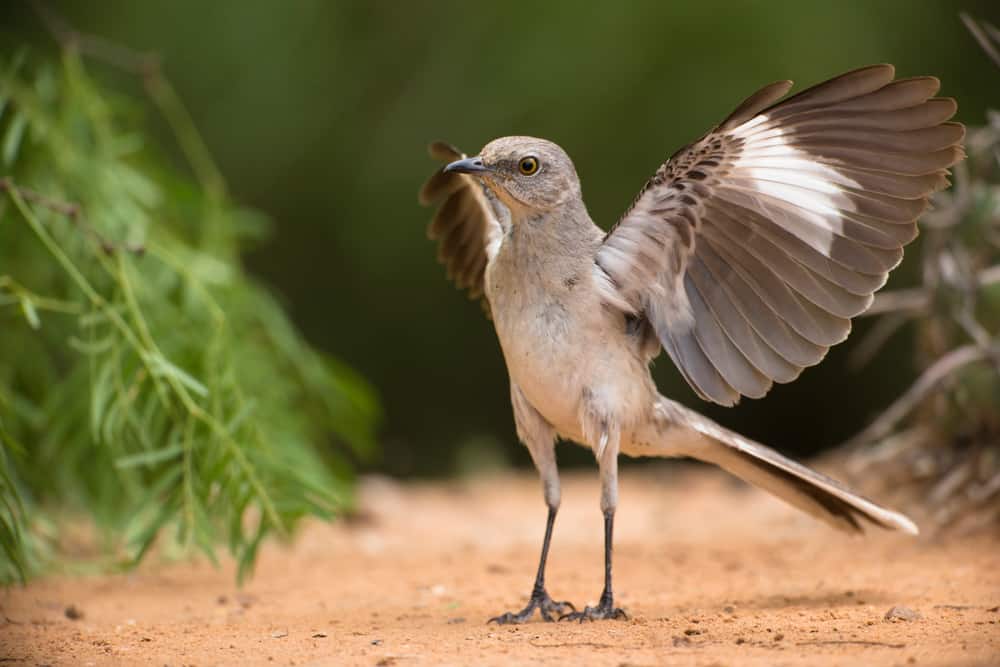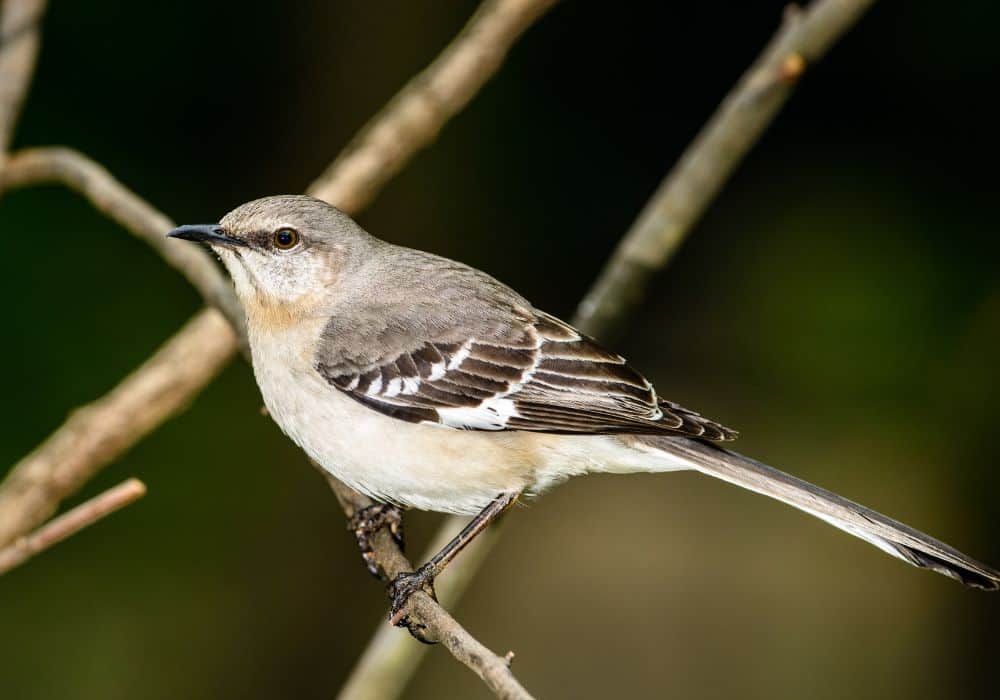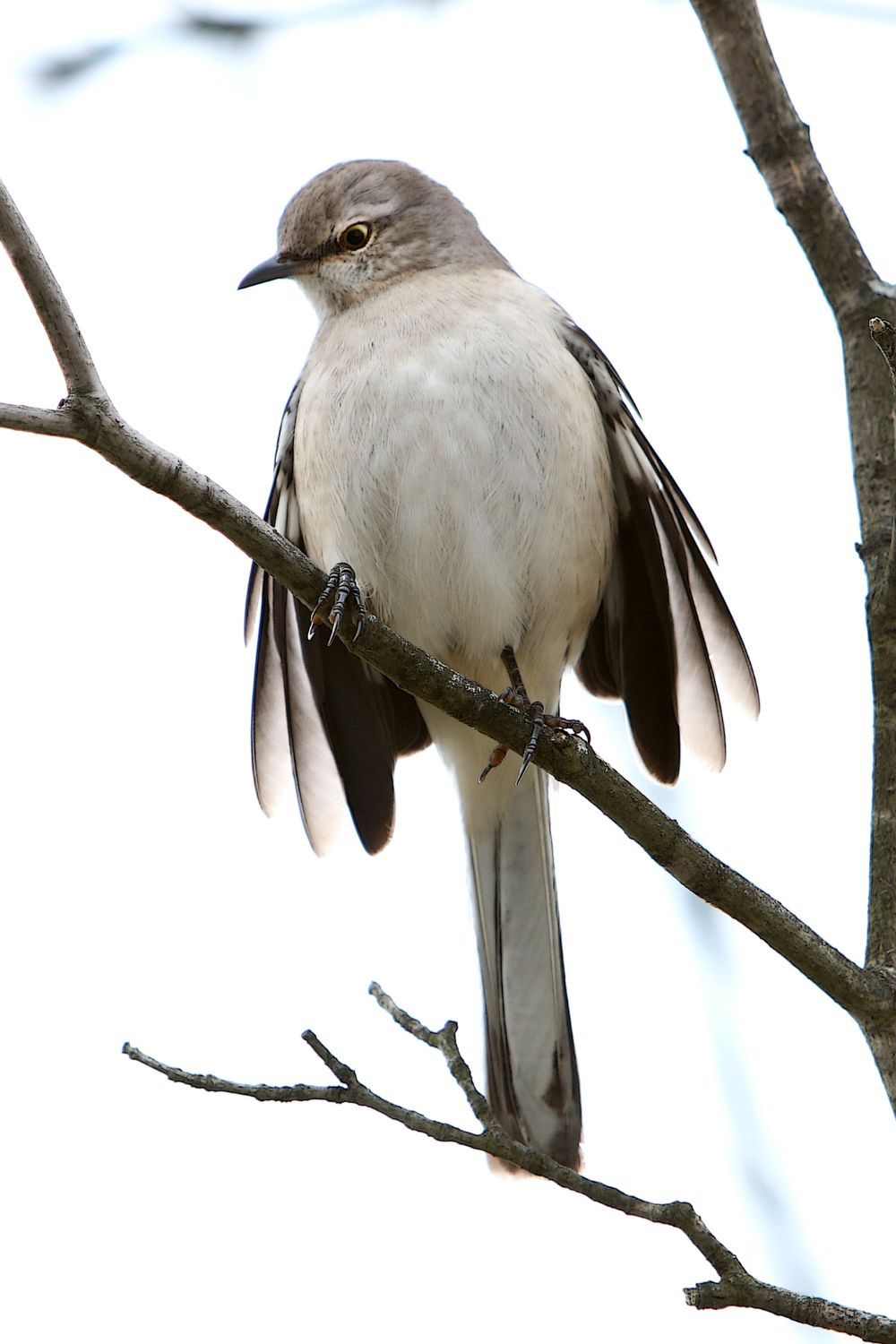The mockingbird is a symbol of our culture and has inspired countless works of art, including books, TV, and film, and these birds have become a symbol of our culture.
With a beautiful signature sound, it’s easy to see why gardeners worldwide want these small birds to visit their homes. Their song is simply sublime.
Today we will explore the most common species found in America, the Northern Mockingbird. We’re going to find out what attracts them to our gardens. We’ll uncover what mockingbirds eat, where they live, and fun facts to keep you enthralled.
Facts about mockingbirds
- The mockingbird belongs to the bird family Mimidae, the Latin word for ‘mimic.’ They share this family with other mimic birds like thrashers, tremblers, and catbirds.
- They once were sold in pet shops as ‘mimic songbirds.’
- The most common mockingbird found in America is the Northern mockingbird. It is the state bird of five US states, including Arkansas, Florida, Mississippi, Tennessee, and Texas.
- They sing throughout the day and night.
- The Northern Mockingbird can know over 200 songs, bird calls, and mechanical sounds. They continue to add to this repertoire all through life.
- They can switch between an astounding 1,000 songs in an hour.
- Adults will spend most if not all of the year in their territory.
- Both males and females look almost identical. The critical difference is that males are slightly larger than females and sing more often.
- Mockingbirds can have up to three broods per year, each consisting of 3 to 5 eggs.
- Both parents play a pivotal part in raising their young; the mother incubates the egg while the father defends them. Both parents feed their nestlings.
- They are small, about the size of a robin, and can live up to 15 years in the wild.
What do mockingbirds eat?
Firstly, mockingbirds are omnivorous, which means they eat everything from insects to fruit, vegetation, and more.
50% of a mockingbird’s diet comes from meat, while the other 50% is plant-based—however, their diet changes with the seasons and food availability.
Let’s take a closer look at what precisely a mockingbird eats and when:
Insects
Mockingbirds hunt various insects throughout spring, summer, and early autumn. Their favorites include earthworms, beetles, and ants.
Scientists have observed mockingbirds doing a signature ‘flash dance’ when stalking through the grass. They think this is to startle and scare insects into moving, helping them pinpoint their location for an ambush.
Mockingbirds can also hunt in flight and will eat any unsuspecting bee, wasp, moth, or butterfly while on the move.
Fruit
Mockingbirds have a sweet tooth and will enjoy eating various fruits. They can swallow them whole with ease.
Mockingbirds will eat everything from grapes, raisins, and bananas to apples, tomatoes, and slices of oranges. They also enjoy wild berries and can pluck them off bushes and trees. Fruit is an essential food source when insects are less common during wintertime.
Seeds
Mockingbirds can eat all manner of seeds, including sunflower seeds and grains like oats and wheat. However, they prefer wetter foods like insects and fresh fruit and will primarily focus on these foods.
Lizards
As aggressive hunters, some species of Mockingbirds are known to hunt and eat small lizards. Although there is little evidence to suggest they eat snakes, Mockingbirds are known to defend their nest from snakes relentlessly.
Tree sap
Although they lack the proper beak to be true sap drinkers, Mockingbirds have been seen to drink sap from recently pruned trees or those with exposed wounds, proving once again that these little birds have a mighty sweet tooth.
Other birds?
Although mockingbirds are one of the most aggressive and territorial small birds, they do not hunt or eat other birds. Some subspecies, such as the hood mockingbird, will steal and eat other birds’ eggs from their nests.
How Do Mockingbirds Hunt?
Mockingbirds are versatile hunters who visit ground level, shrubs, bushes, and high trees in search of food. They can pluck berries clean off stalks, and swallow them whole, there and then.
As for insects, they are known to hop on the ground repeatedly, spreading their wings to alert and scare prey. As the insect scurries away, the mockingbird ambushes them and consumes them.
Mockingbirds are agile flyers and are proficient at hunting ‘on the wing,’ catching bees, butterflies, flies, and more while on the move.
What Are the Mockingbird’s Predators?
Although brave and daring, Mockingbirds are small and suffer from predation. The most common culprits include owls, such as the great horned owl and the screech owl, and hawks, including the swallow-tailed kite and American kestrel.
As well as alarming prey, scientists think that Mockingbirds spread their wings in a dance to intimate potential prey. As a result, Mockingbirds aren’t nearly as killed as other garden birds of similar sizes.
Mockingbird eggs are also a tasty snack for many robber birds, including bluejays, crows, and other animals like squirrels, cats, and snakes.
Tips on feeding mockingbirds
There are a few ways to feed mockingbirds safely and naturally. Some of our suggestions also help you provide a variety of other songbirds to visit your garden.
Suet feeders
A suet feeder is a type of bird feeder that lets birds peck at chunks of food, usually animal fat. They are effective ways to feed mockingbirds because they can store large pieces of animal fats and other staples in their diet.
The food is kept inside a small wire cage. Mockingbirds can’t feed upside down, so ensure there’s space on the top or sides for them to perch on.
Suet feeders are the most effective feeding method during the winter when meat is in short supply, and birds need high-energy food to sustain themselves.
Providing natural food sources
You can easily provide natural foods in your garden by deciding to grow mockingbird-friendly plants and shrubs. These plants grow various nutritious, easy-to-eat berries that birds will feast on.
Some of our favorites to grow include
- Barberry plant: these shrubs have small berries with minimal thorns and are very tasty to garden birds like a mockingbird. Additionally, many insects live throughout this plant, giving the bird a diverse diet.
- Bayberry plant: with aromatic, waxy white berries, the bayberry plant is an essential food source for mockingbirds during winter.
- Raspberry plant: bearing fruit in summer and autumn, raspberry plants offer a tasty meal for any mockingbird in the area. They also make lovely nest sites for couples.
Bird feeders
Although mockingbirds will visit traditional bird feeders, it won’t be their first choice – and if there are other food options, they will prioritize these first.
That said, high-quality, nutritious seeds are your best bet to try and entice them into specific areas of your garden. We recommend buying roasted peanuts and sunflower seeds, as these tend to be a favorite with songbirds and are an excellent source of fat and energy during winter.
You can also place sliced fruits such as oranges, pears, apples, and grapes – as these fruits are a favorite among mockingbirds.
How to attract mockingbirds?
If you want to attract mockingbirds to visit and stay in your garden, we have some simple tips to ensure their stay is long, happy, and safe for everyone.
Bird baths
Bird baths are helpful to garden birds in two ways; they offer a vital source of drinking water. They can cool off in the bath in the hot summer when rainwater is in short supply. In winter, when puddles are frozen over, it gives them hydration.
Bird baths also provide a hygienic way for birds to wash, freeing them of parasites or dirt.
Nesting sites
Mockingbirds do not enjoy enclosed spaces and will avoid nesting in birdhouses – do not even try! But a pair of mates can still set up their home in your garden, so long as you provide them with the appropriate nesting plants and trees.
Generally, these birds prefer shrubs and trees up to 3 – 10 feet off the ground. They like dense shrubs like blackthorn, raspberry bushes, holly, and dogwood. Nesting trees include coniferous trees like red cedar and spruces.
Pick quiet places!
Adult mockingbirds often live in pairs and stay in the same area for the entire year. They are highly territorial and can be somewhat troublesome if they nest in a busy area of your home.
They can be aggressive towards humans, small household pets like dogs and cats, and other songbirds. Research shows that these tiny birds recognize faces over time, and the more contact you have with the bird, the quicker it may react aggressively.
For that reason, when you are attracting mockingbirds – pick quiet areas of your garden where they won’t be disruptive. Avoid placing suet feeders in busy areas, e.g., patios or beside doorways.


